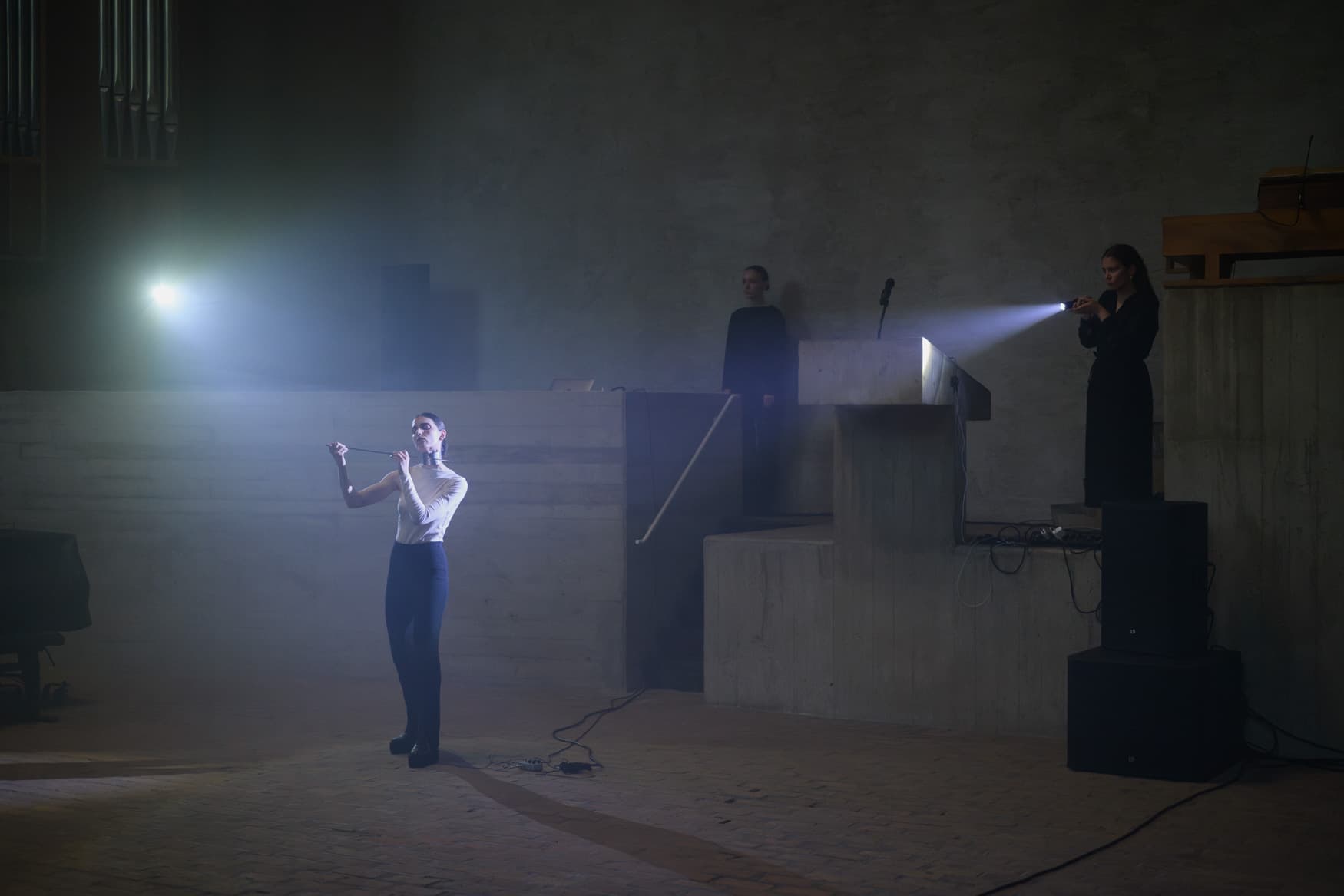Charlène Dannancier
Artificial Times
Biography
Charlène Dannancier is a French composer, performer, and visual artist. Melding unsettling noise music with installation and performance, her work explores excess as both a marker of exclusion and a force of resistance against normative structures and rigid classifications. She creates immersive experiences that probe intimacy, discomfort, and control, using vulnerability as an ethical axis and site of critical reflection.

Someone Could Actually Die Here Tonight
"Maybe this is how it all started between us. Because you saw me both as a fascination and a threat. I barely saw the daylight that day. I needed a drink. The thoughts of the past month still haunted me vividly. Close to the entrance, I considered going back home. To sleep. Alone. To be alone. To recover. But instead, I stepped into the beginning of my slow execution. Amy Berkowitz wrote that, for her, the best noise music venues are places where you walk in and think: someone could actually die here tonight . And I agree. I am always ready for it. But I never could have expected that I would walk directly into hell through you. The sweat, the smoke, the drunkenness had hidden it all from me." Someone Could Actually Die Here Tonight is a deviant opera that merges experimental music, performance art, and autotheory. At the core of the performance is the figure of a woman, caught between internal pressure and eruptive sound. Engaging with feminist discourse and noise music, the work reimagines the operatic trope of the madwoman that is traditionally considered as hysterical excess, turned into a body under tension that is contained, restrained, and unsettlingly silent. The narrative unfolds through the physical and vocal presence of Dannancier, whose movement traces the contours of an intimate relationship marked by control and coercion. The voice is limited, both paired and affected by a self-made hybrid instrument: a metal collar microphone, tethered to a long cable and bowed with a blade. This device acts as a constraint but also amplifies, turning Dannancier’s body into an unstable sonic field where vulnerability becomes audible. Harsh industrial tones, silence, and proximity to the audience generate a spatial and psychological tension that resists resolution. The audience navigates a destabilized space where their role remains uncertain: witness, intruder, participant? This ambiguity becomes part of the performance, implicating them in the power dynamics being staged. The work is a radical exploration of excess; not only as a site of exclusion but as a tool of resistance and expressive manifestation. Through embodied vulnerability and sonic rupture, Charlène Dannancier confronts the mechanisms of control and the legacy of gendered violence embedded in both operatic tradition and contemporary culture.
